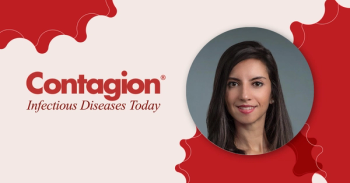
CDC Issues Updated Guidance for Infants Born to Mothers with Possible Zika Infection During Pregnancy
The CDC has issued updated interim clinical guidance for healthcare providers who are caring for infants born to mothers with possible Zika virus infection during pregnancy.
Today, October 19, 2017, in a new Morbidity and Mortality Weekly Report, the Centers for Disease Control and Prevention (CDC) released updated interim clinical
In August 2017, the CDC, in collaboration with the American Academy of Pediatrics as well as the American College of Obstetricians and Gynecologists, hosted a meeting where clinical experts presented emerging evidence in the realm of Zika virus. These presentations focused on the diagnosis, evaluation, and management of infants with potential congenital Zika virus. The evidence presented was used to inform the updated guidance.
Despite the fact that Zika virus cases are down compared with this time last year, cases continue to spring up in other countries across the world and in the United States, which serves as a reminder:
In fact, a recent
“There’s a lot we still don’t know about Zika, so it’s very important for us to keep a close eye on these babies as they develop,” CDC director Brenda Fitzgerald, MD, commented in the official press release. “Learning how best to support them will require a team approach between health care providers and families.”
What is the big takeaway from the updated interim guidance? The updated recommendations underscore the importance of pediatric healthcare providers carefully assessing the risk of congenital Zika virus infection. The recommendations also emphasize the need for close communication between pediatric health providers with obstetrical providers. Lastly, the recommendations stress the importance of remaining alert “for any problems that may develop in infants without birth defects born to mothers with possible Zika virus.”
In order to help healthcare providers make effective clinical management decisions, the guidelines define 3 different groups of infants: (1) infants born with birth defects consistent with CZS, who were born to mothers with possible Zika exposure during pregnancy, (2) infants who were not born with CZS-consistent birth defects, but were born to mothers with laboratory evidence of possible Zika infection during pregnancy, and (3) infants without CZS-consistent birth defects who were born to mothers with possible Zika exposure during pregnancy, but did not have any laboratory evidence of infection while pregnant.
According to the official press release, the new guidance has updated information pertaining to the interpretation of laboratory results for infants as well as infant follow-up care:
- Changes have been made to the recommendations for hearing and vision screening
- Some screenings that had been previously recommended—such as thyroid screening and hearing screening at 4 to 6 months of age—are no longer recommended
- When it comes to infants with CZS-consistent birth defects, providers should “monitor for an expanded list of potential problems” which include issues with breathing and swallowing, as well as hydrocephaly after birth. Furthermore, care and follow-up for these infants is no longer dependent on their Zika virus testing results.
- Infants without birth defects consistent with CZS who were born to mothers with laboratory evidence of possible Zika infection while pregnant “should receive an eye examination by an ophthalmologist.”
- It is no longer routinely recommended that infants without birth defects consistent with CZS who were born to mothers with potential exposure to the virus during pregnancy, but no laboratory evidence of infection, receive “Zika testing and clinical evaluation beyond the standard evaluation and routine preventive care.”
- A review of new data, as well as clarification pertaining to the guidance of prenatal diagnosis, is provided in the updated guidance.
CDC recommends “coordinated care by a multidisciplinary team and an established medical home (an approach to healthcare that helps ensure care is coordinated and infants receive appropriate services)” for infants with CZS, according to the press release. The CDC encourages
As more information is made available, this guidance will be updated.
Newsletter
Stay ahead of emerging infectious disease threats with expert insights and breaking research. Subscribe now to get updates delivered straight to your inbox.





















































































































































































































































































